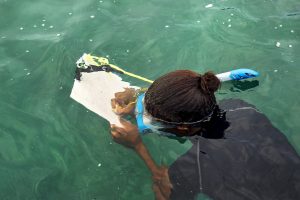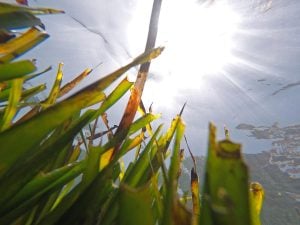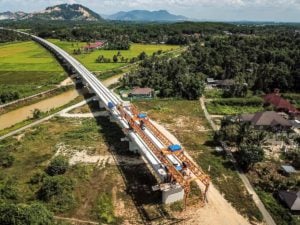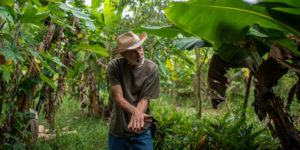The last week of July gave us what appeared to be startling news. The waters near Manatee Bay in Florida touched a feverish 38.4C – a temperature usually found inside a hot tub, not our ocean. If verified, this will have been the hottest sea surface temperature humans have recorded on Earth. Ever.
Then, in the first week of August, the EU’s climate change service, Copernicus, reported that average daily global sea surface temperatures had hit their highest ever recorded – 20.96C – as they soaked up the atmospheric heating caused by climate change.
While shocking, this should not come as a surprise. The warning signs have been just beneath the waves for years.
The implications of ocean heating in a changing climate cannot be overemphasised. It significantly impacts marine life, food security, the viability of coastal communities and their economic, social and cultural continuity, stranded assets, migration, and global resilience.
In July, NOAA (the National Oceanic and Atmospheric Administration of the US) reported that marine heatwaves were affecting 44% of the ocean, and their coverage is predicted to remain near 50% through February next year. Against this background, it is critical that we raise global ambition on the role of the ocean in climate action. This must happen in conjunction with an acceleration of investment of public, philanthropic and private capital into implementing ocean-climate solutions, and these must become a priority.
Today marks three months until COP28 – the UN’s climate summit – begins on 30 November in Dubai.
The choices we make in the next three months will reverberate for generations to come
Countries have just 92 days to strengthen their ambitions to take the action needed to avoid the worst impacts of climate change. They need to ensure we achieve the targets of the Paris Agreement, accelerate investment into the deployment of nature-based solutions, such as restoring mangroves and other coastal habitats, and build adaptive capacity and resilience.
At the heart of this struggle is our ocean.
The ocean has absorbed more than 90% of the heat caused by our greenhouse gas emissions. Without it, average temperature on land last year would have been a lethal 50C – the temperature at which human cells begin to degrade. We can all thank the vastness of the ocean for the fact that, instead, average terrestrial temperatures were just 13C; though this year, this has been measured as rising to 17C.
Our ocean is now reeling from this burden.
Fundamental planetary system tipping points, like the melting of the polar ice sheets and the loss of biodiversity-rich coral reefs, hang in a precarious balance.
Industrial fishing has decimated fish populations – about 90% of fish stocks are currently overexploited or fished to the maximum sustainable level – and further eviscerated marine biodiversity. While pollution from plastics and other sources is not only killing sea life but poisoning the food which makes it back to our own dinner plates.
Yet, despite all this, less than 1% of climate finance is directed towards the ocean. The UN Sustainable Development Goal on Life Below Water, SDG 14, is the least invested in of the 17 goals.
There is overwhelming evidence that investing in coastal and ocean resilience is a strategic climate solution, and plain common sense. Nature-based solutions in these areas are hiding in plain sight. They offer cost-effective investments that build coastal resilience and reduce risk. But we cannot implement these solutions without widespread international support.
There are reasons for hope. Over the past year, key decisions have been taken on the critical importance of nature and the ocean, underlining the close connections between the biodiversity and climate crises as well as the need for accelerated action to address both.
These include adopting the target to protect 30% of the ocean by 2030 as part of the Convention on Biological Diversity’s Kunming-Montreal Global Biodiversity Framework, the protection of ocean life in international waters though the UN’s High Seas Treaty, and the World Trade Organisation’s agreement on prohibiting perverse fishing subsidies.
These steps move us in a more positive direction and have shown what we can do when we come together as a global community. The agreement to establish new funding arrangements and a Loss and Damage Fund at COP27 last year in Sharm El-Sheikh was another significant breakthrough. It has the goal of lining up funding to the countries who are most vulnerable to the effects of climate change – loss of land, ecosystems, heritage, biodiversity, people’s livelihoods and even lives.
Now, as we approach COP28 in Dubai, witnessing rapid and unprecedented heating across our ocean – the world’s largest biome – as well as on land, we cannot fail to make 2023 the year that delivers decisive and comprehensive action. The stakes have never been higher.
COP28 will mark a pivotal moment to build upon these global ocean commitments to implement climate action that recognises the critical role of the ocean in climate regulation, as well as in delivering adaptive and resilient nature-based solutions.
And that is just what the Ocean Risk and Resilience Action Alliance (ORRAA) is working to do: not just to bring about change, but to pioneer it. We are the only multi-stakeholder alliance working in ocean finance, across geographies – with a focus on the global south – to develop, pilot and scale innovative finance products that invest in coastal and ocean resilience.
Our mission is to build the resilience of 250 million climate-vulnerable coastal people by 2030, by deploying at least USD$500 million of investment into coastal and ocean natural capital through the development of at least 50 novel finance and insurance products.
We are encouraging our more than 80 member organisations, including banks, insurers, multi-lateral institutions, civil society and countries, to support the delivery of five key ocean-climate outcomes at COP28:
- Significantly scaling finance commitments and accelerating climate finance flows into mitigation and adaptation action in support of the protection and restoration of coastal and ocean natural capital, both within and beyond national jurisdictions, including through targeted investments into coastal nature-based solutions.
- Committing to new and more ambitious Nationally Determined Contributions and national climate action plans that include the ocean, and recognise the rights of coastal communities, helping to restore the ocean’s capacity to regenerate marine life, build resilience and the adaptive capacity of coastal communities.
- Integrating the role of coastal blue carbon ecosystems across UN climate negotiations for their role in mitigation, adaptation, and averting and minimising losses and damages, together with building strengthened understanding of financing options for coastal ecosystem restoration including through Article 6, the voluntary carbon market, and non-market financing options. All initiatives to sequester and store blue carbon must ensure positive local social, economic and ecological impacts through the application of critical guardrails and standards as outlined in the High-Quality Blue Carbon Principles & Guidance, a blue carbon framework published by Salesforce, ORRAA, and a coalition of ocean leaders.
- Supporting a moratorium or precautionary pause on all deep-seabed mining within and beyond national jurisdictions, emphasising the need to preserve the delicate balance of our underwater ecosystems and in accordance with the precautionary principle.
- Recognising the alignment with the Kunming–Montreal Global Biodiversity Framework and the call for the swift ratification of the High Seas Treaty to enhance ambition and accelerate implementation of integrated ocean-climate action with coherent pathways for scaling financing for ocean-based climate solutions.
The successful adoption of these five proposals would strengthen the resilience of coastal communities, lead to comprehensive ocean and coastal conservation, safeguard marine biodiversity and preserve the delicate balance of marine environments. It would also ensure a cohesive global strategy to combat both biodiversity loss and climate change in coastal areas and conserve the ocean’s overall health.
At COP28, we have the opportunity to accelerate our race to global resilience. But we are racing against the clock; the choices we make in the next three months will reverberate for generations to come. The ocean has always been our protector, insulating us from a warming atmosphere, and it is past time for us to repay the favour.









